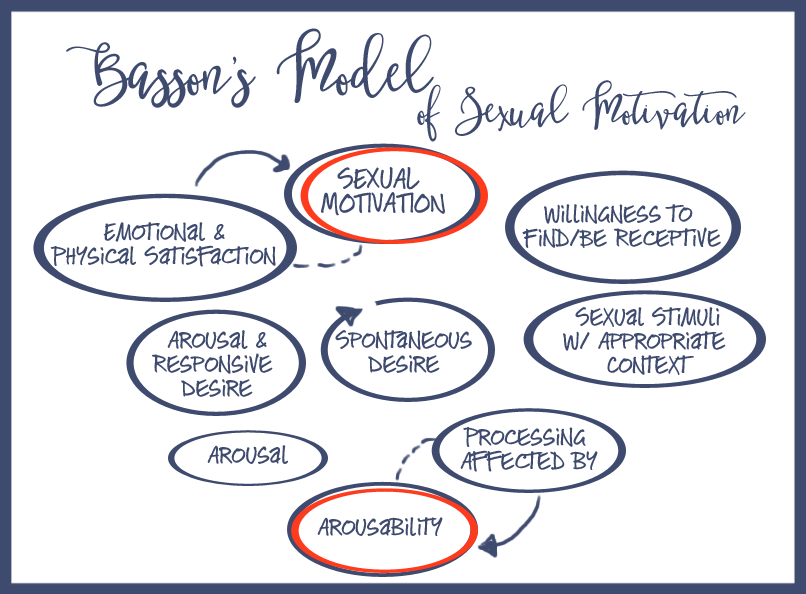Sexology, the study of human sexual behaviour and sexuality, is a word that triggers both excitement and a sense of taboo. To study human sexual behavior is to break down and analyze our desires, our drives, and our passions. While sexology feels progressive and new, it is still plagued by a problem that is common in many fields; it is androcentric, meaning that research is centered around men. Times, however, are changing! Women are taking their rightful places in research, and a prime example of this is the Sexual Response Cycle (SRC).
The SRC was first created by Masters and Johnson, who you may be familiar with as the inspiration for the show Masters of Sex. Through their work, this couple brought sexology into the scientific spotlight. They based their model off the opening scene in Bridesmaid, when Annie just lays there having entirely unsatisfying sex until her partner finishes and rolls over. Okay, so they actually based it on imperfect research, but they came to similar conclusions. The traditional SRC is quite simple; the model is composed of desire, arousal, orgasm and resolution, in that order (see figure 1).
The simplicity of this model is desirable, but it has its fair share of valid criticisms. The first being that while it is an adequate model for men, it does not capture the experiences of many women. Research has shown that men and women often differ in their mode of sexual desire. Men’s desire has been characterized as spontaneous desire, meaning it can sneak up and happen at a moment’s notice, while women are thought to have responsive desire (Basson, 2000). Responsive desire happens as a result of sexual stimuli, either emotional or physical, as opposed to spontaneous. Some women do report having spontaneous desire, but often note that this model stops being accurate in longer term relationships (Basson, 2001).
A second criticism is that the SRC model positions the big O as the goal of sex. Now, stay with me here… I am not trying to argue that orgasms are not important, they are! I am, however, simply suggesting that placing so much importance on orgasms can detract from the experience. There are many reasons to have sex that are not specifically in search of an orgasm. For example, in a study titled Why Humans Have Sex, reasons like: “I wanted to express my love for the person” and “I wanted to show my affection for the person” were listed more frequently by both men and women than “I wanted to achieve an orgasm” (Meston & Buss, 2007). While orgasms are an amazing outcome of sex, they should be seen as a happy addition. The goal of sex should be whatever you are in need of, whether it be emotional connection or physical satisfaction (or both!). By shifting our thinking to see orgasms as a bonus rather than the finish line, each encounter can be a more personal and fulfilling experience.
So, it seems pretty clear that the current model could use an update. Luckily, someone has done exactly that! Dr. Rosemary Basson, the director of the University of British Columbia Sexual Medicine Program and a professor at UBC, has proposed an alternative SRC (see figure 2). While this is a more complex model, Dr. Basson does not shy away from the complexity of sex. One of the biggest benefits to this model is that it is a non-linear model, meaning it has no start and no finish. It removes both the requirement of spontaneous desire and orgasm as the finish line.
When looking at the model, you can see that there is no starting point for desire. It can still start as spontaneous, like as a sex dream or fantasy or when thinking about, oh I don’t know... Jon Hamm or Dua Lipa, but it is not the only way. Sex can start with sexual stimuli like foreplay or dirty talk that, in turn, causes desire to follow. It can also start as sexual motivation for emotional and physical satisfaction (Basson, 2001). This means that even though you may not be feeling desire at that moment, you want have sex to reap the emotional and physical benefits, and will lead to an interaction followed by desire.
The Basson model still has ways to go before it replaces the Masters and Johnson model, but the research into it is promising! Although it is a good start, there is still so much research to be done that focuses on women as well as men, but the sexual response cycle is a step in the right direction! Until then, here’s to having more satisfying sex than Annie.


